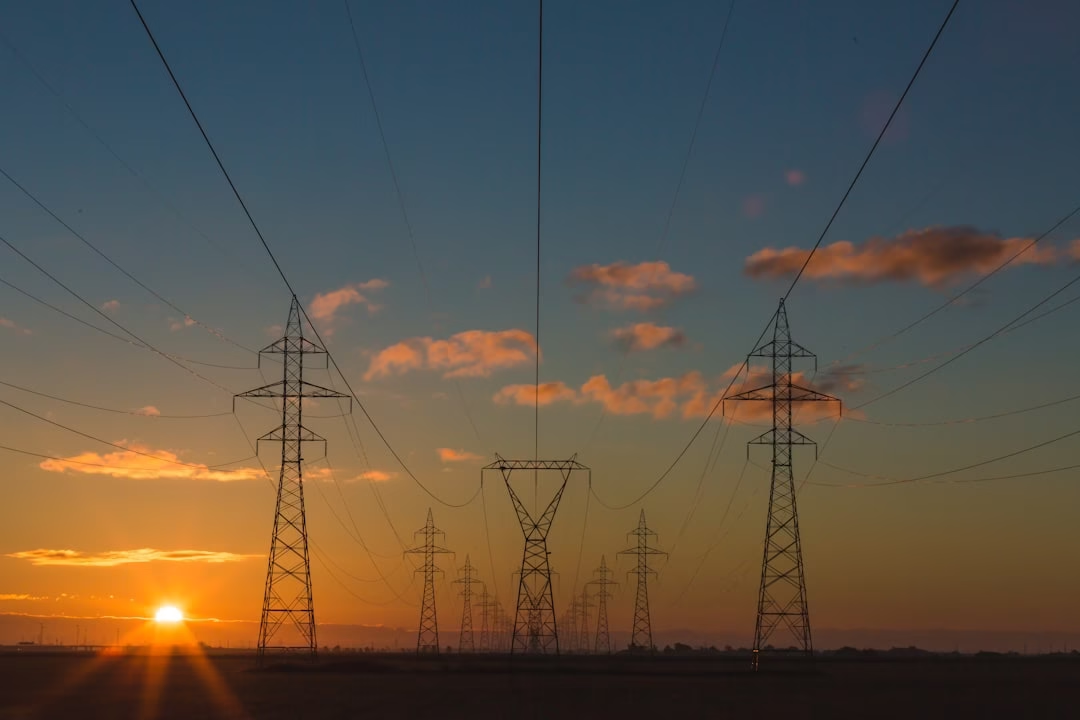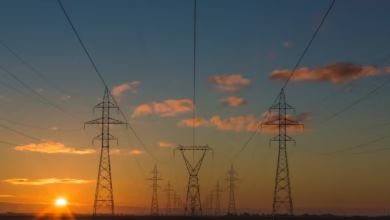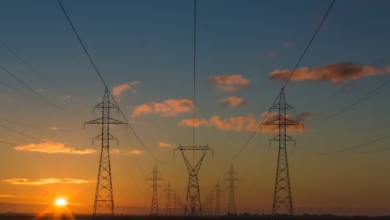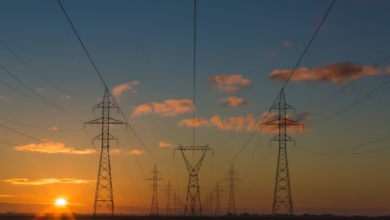Powering the Future: The Renewable Energy Revolution of Solar, Wind, and Hydrogen
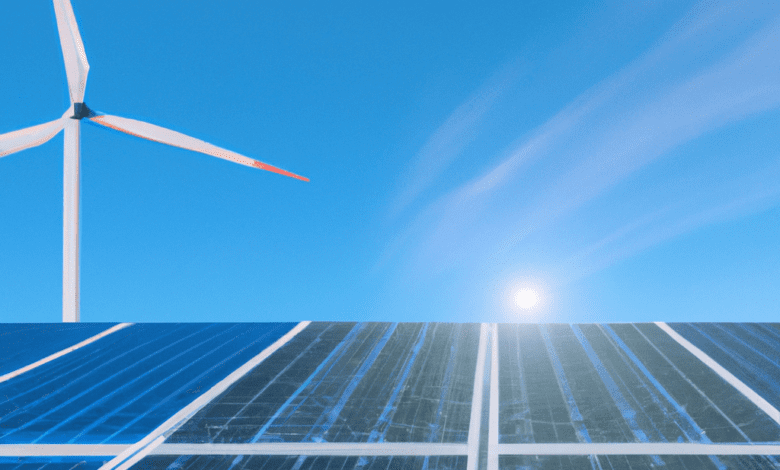
As the world grapples with the pressing challenges of climate change and energy security, a remarkable transformation is underway in the way we harness and utilize power. The rise of renewable energy sources—particularly solar, wind, and hydrogen—marks a pivotal shift not only in technology but also in our global energy paradigm. These clean energy alternatives are no longer just concepts for the future; they are becoming integral to our daily lives and economies. In this article, we will explore the solar revolution and its profound impact on energy independence, uncover how wind energy is reshaping the global power landscape, and delve into the exciting potential of hydrogen as a sustainable energy source. Join us as we navigate through these innovative solutions that promise to illuminate a cleaner, greener future for generations to come.
- 1. **Harnessing the Sun: The Solar Revolution and Its Impact on Energy Independence**
- 2. **Winds of Change: How Wind Energy is Reshaping the Global Power Landscape**
1. **Harnessing the Sun: The Solar Revolution and Its Impact on Energy Independence**
The solar revolution has emerged as a transformative force in the global energy landscape, fundamentally altering how we harness and utilize energy. As the technology to capture sunlight has evolved, solar power has become one of the most accessible and scalable renewable energy sources available. This shift is not only empowering individuals and communities to generate their own electricity but also significantly contributing to energy independence on both local and national levels.
At the heart of this revolution is the rapid advancement in photovoltaic (PV) technology, which has seen dramatic declines in costs over the past decade. Improved efficiency and innovative manufacturing processes have made solar panels more affordable and accessible to a wider audience, from homeowners to large-scale commercial operations. This democratization of energy generation allows households to install solar systems, reducing their reliance on traditional utility providers and fostering a sense of autonomy over their energy consumption.
The impact of solar energy on energy independence extends beyond individual households. Communities that invest in solar infrastructure can benefit from localized energy production, reducing the need for electricity imports and enhancing grid resilience. This shift can be particularly crucial for regions that have historically depended on fossil fuels or external energy sources. By harnessing solar power, these areas can bolster their energy security, mitigate the volatility of global energy markets, and promote economic stability.
Moreover, the integration of solar energy into the broader energy mix accelerates the transition away from fossil fuels, aligning with global climate goals. As countries strive to meet their commitments under international agreements like the Paris Accord, the widespread adoption of solar power presents a viable pathway to reduce greenhouse gas emissions. In doing so, nations not only work towards a sustainable future but also enhance their energy independence by diminishing their reliance on imported fossil fuels.
As innovative financing models and government incentives continue to emerge, the solar revolution is poised to expand even further. Community solar projects, for example, enable groups of individuals to share the benefits of a single solar installation, making renewable energy accessible to those who may not have the capacity to install panels on their own properties. This collaborative approach not only fosters community engagement but also amplifies the collective impact on energy independence, creating a more resilient and self-sufficient energy ecosystem.
Ultimately, the rise of solar energy represents a pivotal moment in the quest for energy independence, offering a pathway to a cleaner, more sustainable future. By harnessing the power of the sun, communities and nations alike can take control of their energy destinies, reducing dependence on volatile fossil fuel markets while simultaneously addressing the pressing challenges of climate change. The solar revolution is not just an energy trend; it is a cornerstone of a more resilient and equitable energy future.
The global shift toward renewable energy sources has gained unprecedented momentum in recent years, with solar, wind, and hydrogen power at the forefront of this transformation. As the world grapples with the pressing challenges of climate change, energy security, and the depletion of fossil fuels, these clean energy alternatives are becoming crucial components of national and international energy strategies.
Solar power, harnessed through photovoltaic cells and solar thermal systems, has seen dramatic cost reductions and technological advancements. The International Renewable Energy Agency (IRENA) reports that the cost of solar electricity has fallen by over 80% in the last decade, making it one of the most affordable sources of energy available today. This accessibility has led to widespread adoption across residential, commercial, and utility-scale projects, empowering individuals and communities to generate their own electricity and reduce reliance on grid power.
Wind energy, another cornerstone of the renewable revolution, has experienced similar growth. With advancements in turbine technology, including larger blades and higher towers, wind farms can now capture more energy from gusts than ever before. Offshore wind, in particular, has emerged as a game changer, with vast areas of ocean providing opportunities for large-scale generation. Countries like Denmark and Germany have become leaders in this sector, demonstrating that wind power can significantly contribute to national energy portfolios while also driving job creation and economic growth.
Hydrogen power, often regarded as the fuel of the future, holds great promise in the transition to a sustainable energy economy. Produced through various methods, including electrolysis powered by renewable energy, hydrogen can serve as a versatile energy carrier and storage solution. It can be used to decarbonize hard-to-abate sectors such as transportation, heavy industry, and heating. The development of hydrogen infrastructure is gaining traction, with governments and private sectors investing in technologies to produce, store, and transport hydrogen efficiently.
Together, these renewable energy sources represent a paradigm shift in how we generate and consume energy. As the world moves toward a more sustainable future, the integration of solar, wind, and hydrogen power into the energy mix will be essential in meeting climate goals, fostering economic resilience, and ensuring a stable energy supply for generations to come. The path forward is not without challenges, such as grid integration, energy storage, and policy frameworks. However, with continued innovation and collaborative efforts, the rise of renewable energy is poised to reshape the global energy landscape.
2. **Winds of Change: How Wind Energy is Reshaping the Global Power Landscape**
As the world grapples with the pressing challenges of climate change and energy security, wind energy is emerging as a pivotal player in the transition towards a sustainable power landscape. Harnessing the natural force of wind, which is abundant and renewable, has seen significant advancements in technology, efficiency, and integration into the energy grid, positioning it as a cornerstone of global energy strategies.
One of the most notable trends in wind energy is the rapid increase in installed capacity. In recent years, countries across the globe have invested heavily in both onshore and offshore wind projects. According to the Global Wind Energy Council, the total installed capacity of wind power surpassed 900 gigawatts (GW) by the end of 2022, with projections indicating continued growth. This surge is largely driven by declining costs, which have made wind energy one of the most economical sources of new electricity generation. Technological innovations, such as larger and more efficient turbines, have played a crucial role in this cost reduction, enabling wind farms to produce more energy from less material.
Furthermore, the shift towards offshore wind projects marks a significant evolution in the wind energy sector. Offshore wind farms, positioned away from populated areas, can harness stronger and more consistent wind currents, leading to higher energy yields. Countries like Denmark, the United Kingdom, and Germany have pioneered large-scale offshore developments, and new entrants, such as the United States and China, are rapidly expanding their capabilities. This expansion not only contributes to energy diversification but also fosters job creation and economic growth in coastal regions.
Wind energy is also reshaping national energy policies and strategies. Governments are increasingly recognizing the importance of integrating renewable sources into their energy mix to achieve climate targets and reduce reliance on fossil fuels. Many nations have set ambitious goals for renewable energy adoption, with wind power often at the forefront. For instance, the European Union aims to generate 40% of its electricity from renewable sources by 2030, with wind energy playing a significant role in achieving this target.
Moreover, the integration of wind energy into existing power grids presents both challenges and opportunities. As wind generation is inherently variable, advancements in energy storage technologies and grid management systems are critical to ensuring reliability and stability. Innovations such as battery storage, demand response systems, and smart grid technologies are being developed to complement wind power, enabling a seamless transition to a more sustainable and resilient energy infrastructure.
In addition to its environmental benefits, wind energy also promotes energy independence. By harnessing local wind resources, countries can reduce their dependence on imported fossil fuels, enhancing their energy security and economic stability. This shift not only helps mitigate geopolitical risks associated with energy supply but also stimulates local economies through job creation in manufacturing, installation, and maintenance of wind energy systems.
In conclusion, wind energy is not merely a supplement to traditional energy sources; it is a transformative force reshaping the global power landscape. Its rapid growth, technological advancements, and integration into energy policies signify a collective commitment to a cleaner, more sustainable future. As the winds of change continue to blow, the potential for wind energy to lead the charge towards a decarbonized world remains immense, offering a glimpse of a brighter energy horizon.
In conclusion, the rise of renewable energy sources such as solar, wind, and hydrogen power marks a transformative shift in our global energy landscape. As we harness the sun's rays through innovative solar technologies, we not only enhance energy independence but also pave the way for a sustainable future. Wind energy is similarly redefining power generation, demonstrating its capacity to provide clean, abundant energy that reduces our reliance on fossil fuels. Together, these renewable resources are driving a significant reduction in greenhouse gas emissions and promoting energy security worldwide.
As we look ahead, the integration of hydrogen power into our energy mix holds tremendous potential for further decarbonization and efficiency. By investing in these technologies and infrastructure, we can collectively address climate change, stimulate economic growth, and create jobs in emerging green sectors. The future of energy is bright, and with continued commitment and innovation, we can ensure that renewable energy not only meets our current demands but also secures a healthier planet for generations to come. Embracing this energy revolution is not just a choice; it is an imperative for a sustainable and resilient world.


